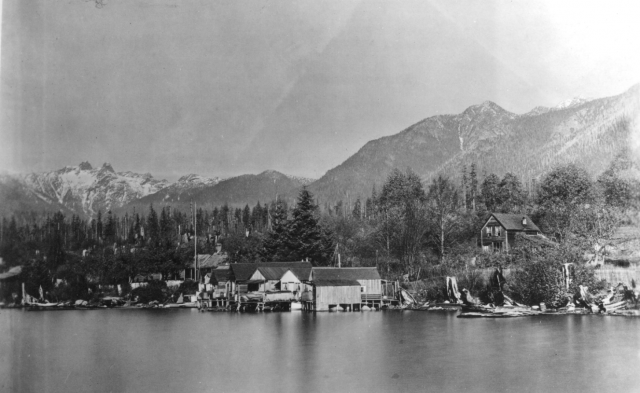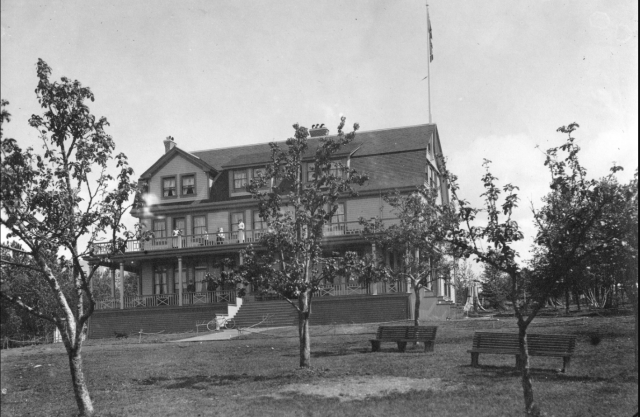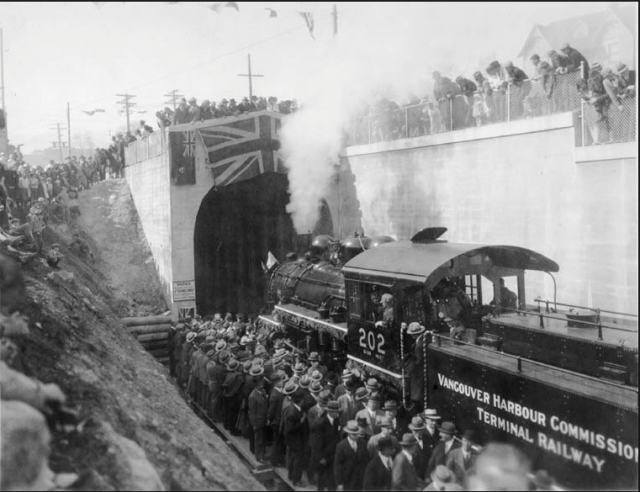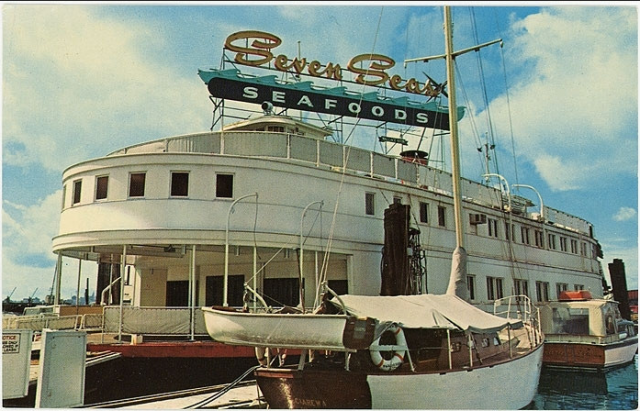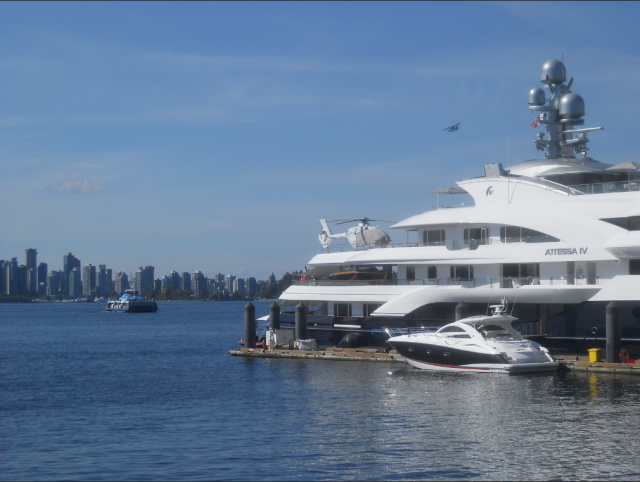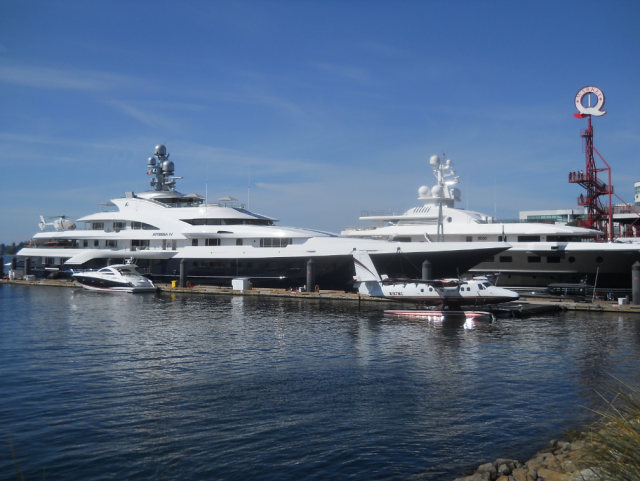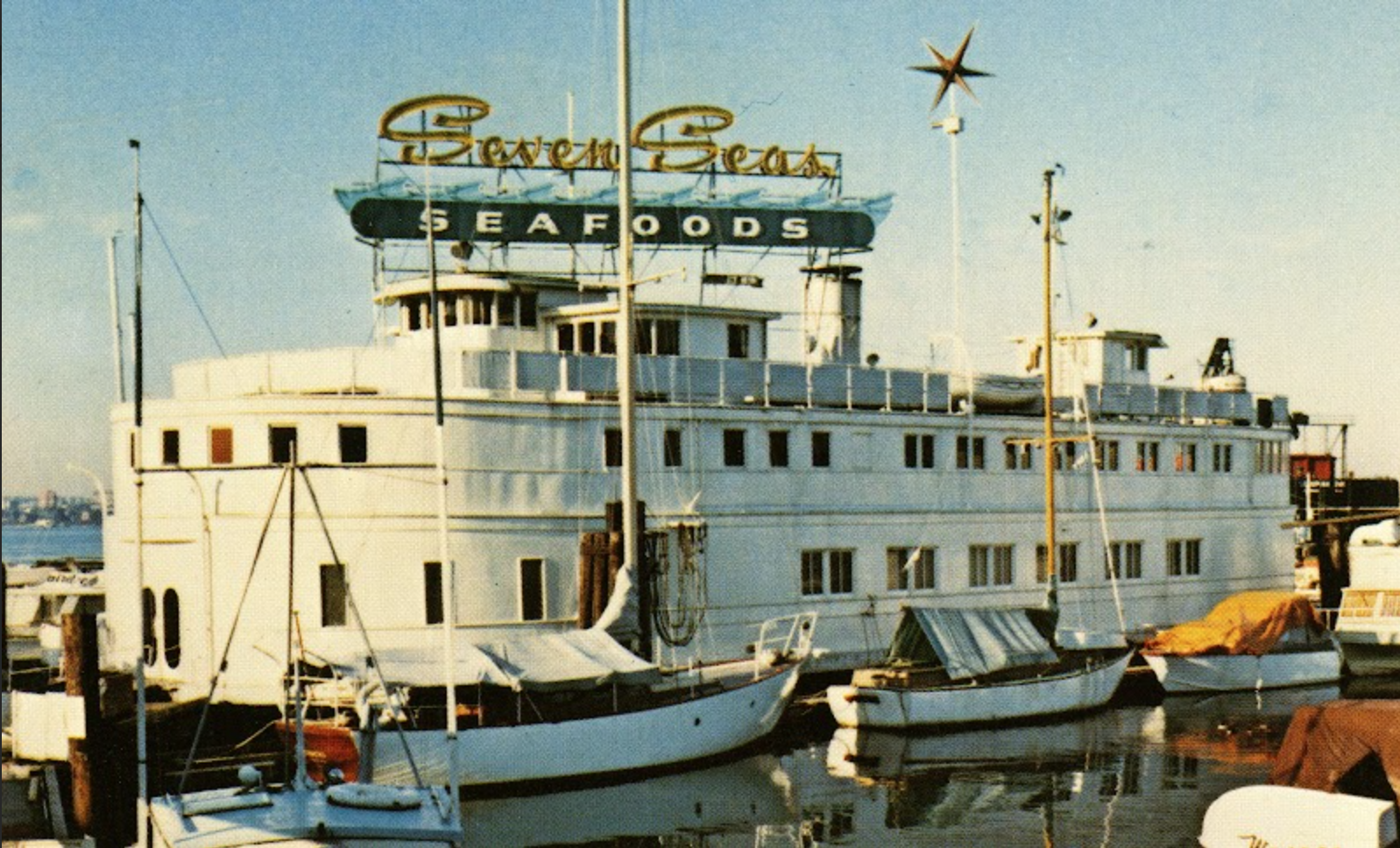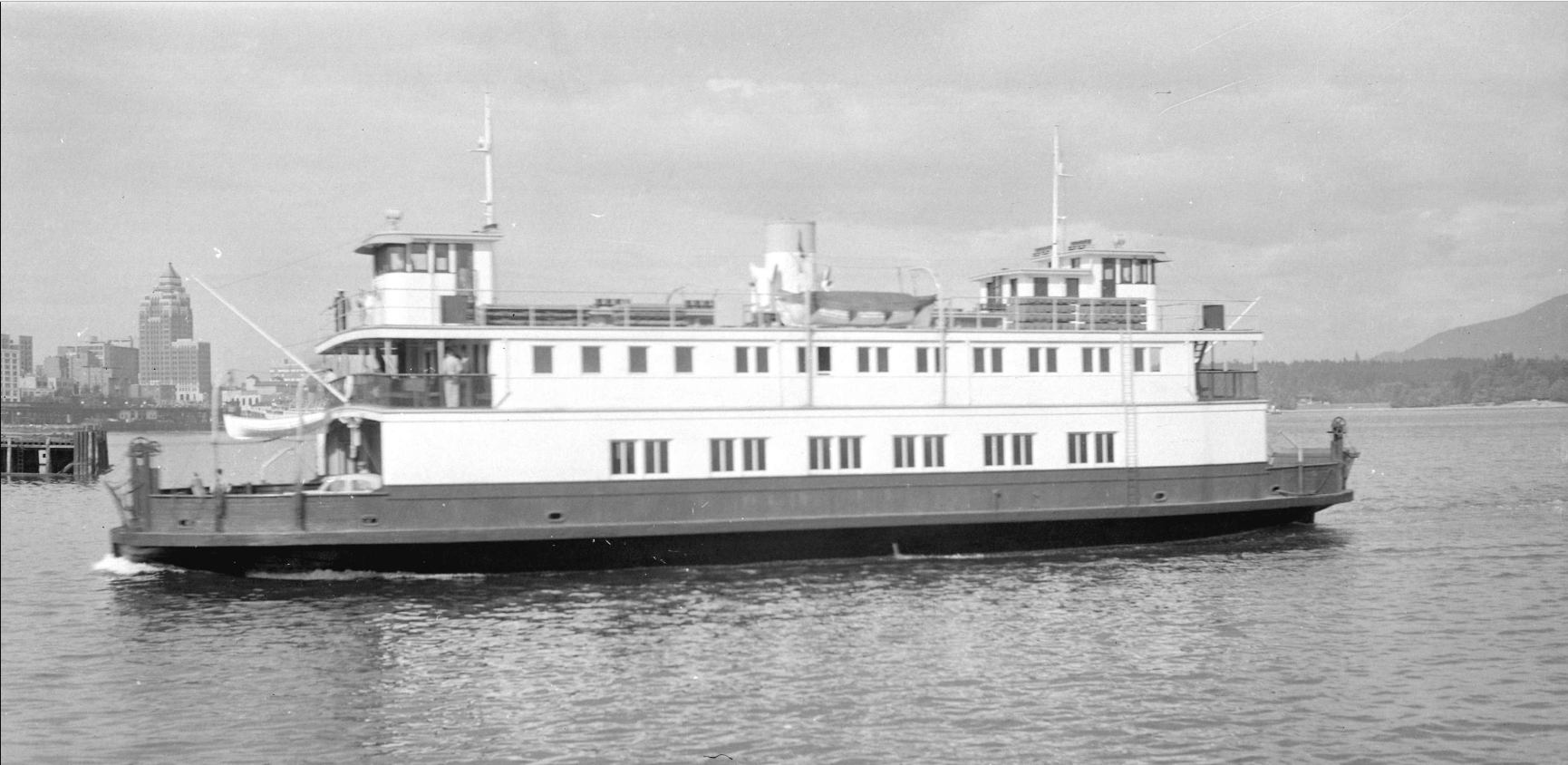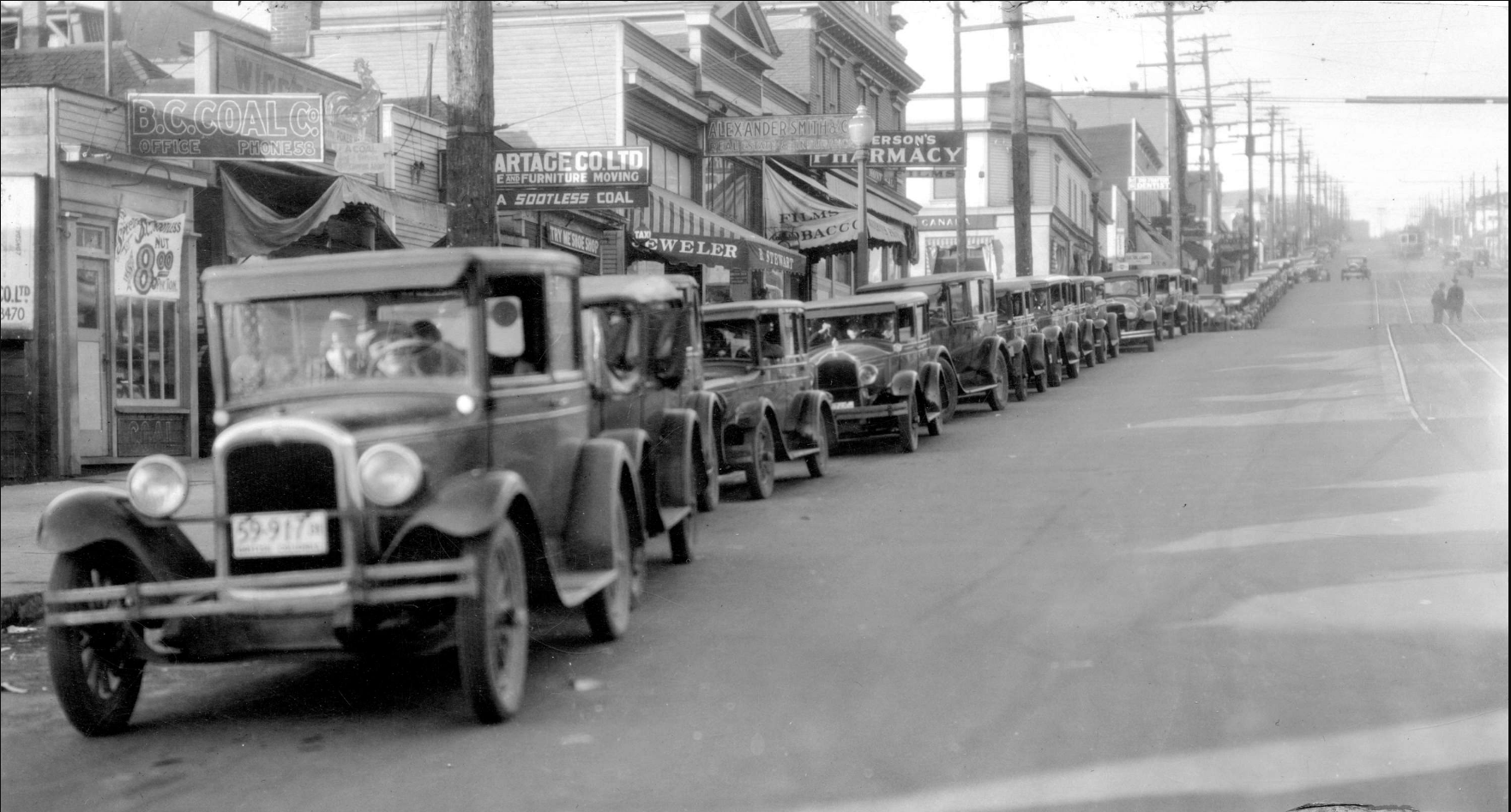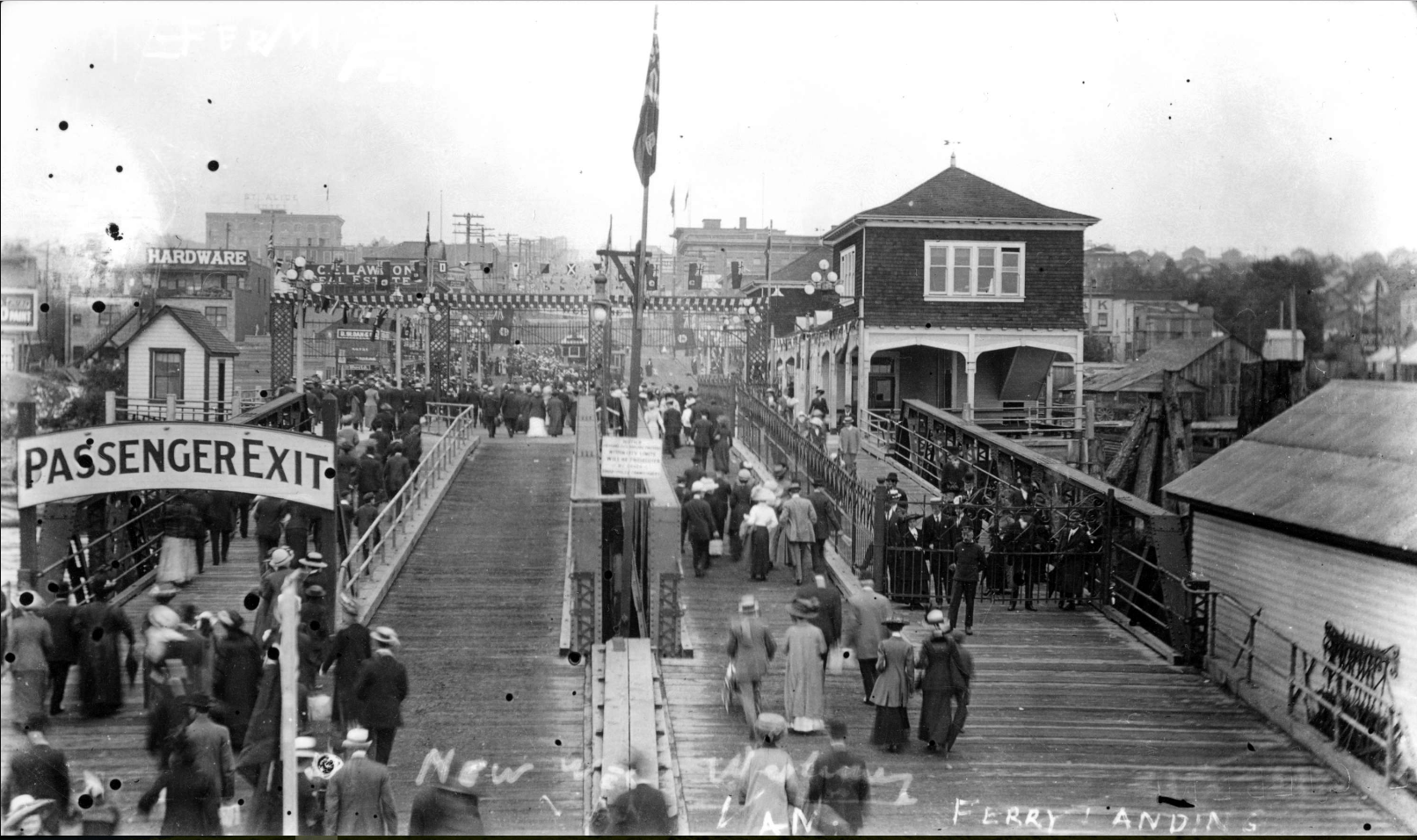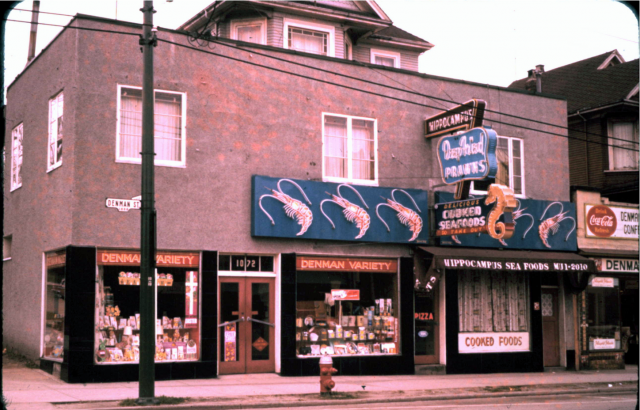
When Fritz Autzen, a baker from Neukölln, Germany moved his family to British Columbia in 1954, his first job was a cook at Zaro’s of America, a deli on Robson Street. Five years later he moved his family to the West End and established the Hippocampus, a fish & chip shop on Denman and Comox Streets.
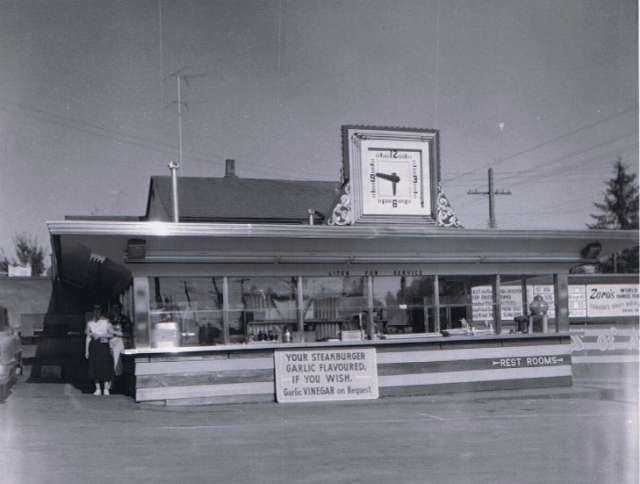
When he wasn’t working, Fritz loved to take photos in and around Vancouver, and his daughter Chris Stiles recently sent me some of her favourites.
Story from Vancouver Exposed: Searching for the City’s Hidden History
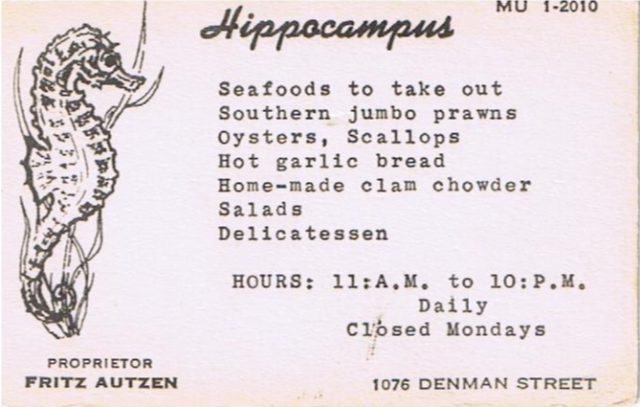
Hippocampus
One of them is of a business card with the opening hours 11 am to 10 pm Tuesday to Sunday. “I remember the first few years my dad had the business he never closed for holidays because he was afraid that somebody else would come and take his customers,” she says.
Fritz invented the torpedo sandwich and garlic vinegar to put on your fish and chips.

Chris and her older brother Michael went to Lord Roberts Elementary. The house and business are still there—one of a row of four along Denman near Davie, and some of Vancouver’s few remaining “buried houses.”
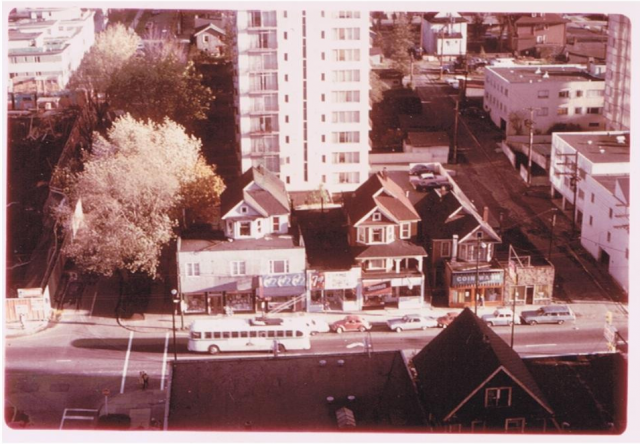
The West End:
The houses were built in the early 1900s, but a look through the city directories shows the storefronts weren’t added until the 1940s. By the end of that decade, Harry Almas, who owned the King Neptune Seafood Restaurant in New Westminster, and in 1959, North Vancouver’s Seven Seas Restaurant at the foot of Lonsdale Avenue, bought the house and added three apartments. The Hippocampus opened in 1953. Fritz and Herta moved into Harry and Eva Almas’s apartment and managed the other two apartments in return for a break in the rent.
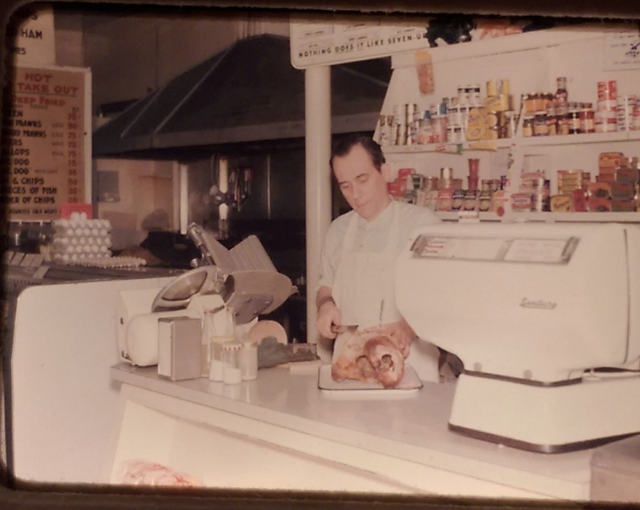
Because Monday was the only day the store closed, Fritz would grab his camera and take the kids out of school and hit Stanley Park, pick huckleberries at Lost Lagoon, and eat at the Marco Polo in Chinatown. In summer, the kids would wait for the diving barge and slide to come in at English Bay.
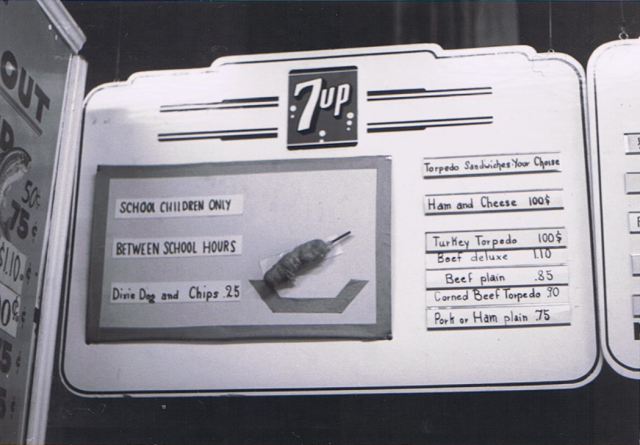
Chris still has Fritz’s immigration papers when Fritz entered Canada a few months ahead of his family in 1954. His net worth was $226 and included his clothes (valued at $160), a pair of binoculars and his Teco camera.
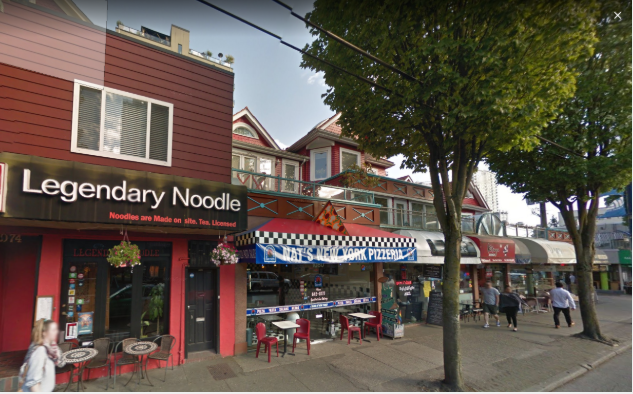
The family lived above the store from 1959 to 1968. That year they moved to Richmond and Fritz opened the Seahorse Café.
When Fritz died in 1981, he left over one thousand slides.
Top photo: The Hippocampus at 1076 Denman Street, ca.1960. Fritz Autzen photo
© All rights reserved. Unless otherwise indicated, all blog content copyright Eve Lazarus.



